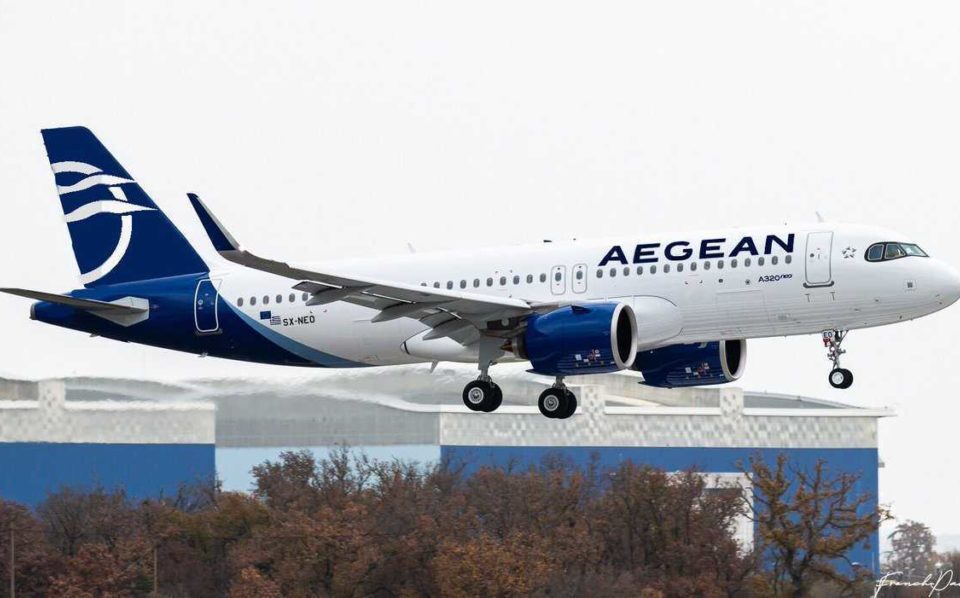Santorini, known for its unparalleled natural beauty and historical significance, attracts millions of tourists every year, making it one of the most popular destinations worldwide.
In this context, the increasing use of helicopters by visitors to the island has caused controversy. Helicopters offer a fast and efficient mode of transport, especially for high-income tourists who choose Santorini for their holidays. This category of visitors makes a significant contribution to the local economy, spending money on luxury accommodation, restaurants and shops, thus boosting the economic activity of the island and beyond.
The helicopters used in Santorini meet strict safety criteria, usually have noise certificates and the airlines operating in this sector comply with legal procedures and follow all the necessary protocols.
In addition, landing fields on the island have been carefully selected away from residential areas. The complaints expressed by some residents are understandable, but do not reflect the general interest of the community. A ten-member committee was established to conduct an audit from which the following conclusions were drawn.
Although those operating the helicopters want to be as formal as possible, this does not appear to be possible for the following reasons:
- Santorini airport does not like helicopters. As an example, less than 20% of PPR landing requests are met.
- There is no officially licensed heliport on the island although the operators have repeatedly requested it from the Municipality.
- With the above by way of atrial abduction we conclude that helicopters in Santorini can only land on landing fields.
According to the EASA and ICAO legislation on how to operate aircraft, we are talking only about non-scheduled or charter flights. In Decree 19/2009 – Government Gazette 35/A’/3.3.2009 Article 3 par. 1 f’,, it is clearly stated that non scheduled “unscheduled flights” are not required to be operated from heliports. Furthermore, as described in Article 12, para. 1, of the same Order, “The helicopter pilot is responsible for the operation of the helicopter on landing fields, has full responsibility for the suitability of the landing field and judges, while in the air, the suitability of the area”.
What exactly does Scheduled Flight mean? Why is there an inability by some to understand and interpret the term as they wish on a case by case basis?
A scheduled flight is a flight that operates according to a fixed schedule, offering regular services between specific airports or heliports. These flights are publicly available for booking and are operated consistently, regardless of the number of passengers. Unlike charter flights, scheduled flights follow a fixed schedule published by the airline. (More below under Definitions)
What has not been realized is that worldwide helicopters were built to operate predominantly out of organized spaces i.e. rooftops, gardens, yards, fields. Here in Greece there seems to be a view that they can only operate from airports and heliports. It should be noted that the certifications of the majority of Greek heliports have expired, effectively turning them back into fields… Heliports that have no electricity, their fire-fighting equipment has not been in operation for years, the gliders are non-existent, the markings have disappeared, etc.
So while the state seems incapable of controlling itself, i.e. the state heliports, it takes it out on private amateurs or professionals. It is worth noting that of the destinations chosen by VIP passengers only 5% can be satisfied in the ways that civil aviation is trying to establish. The committee consisting of a prosecutor, police, the Civil Aviation Authority (CAA), the AADE as well as the customs authority, carried out a visit yesterday, August 8, to all the landing fields in Santorini. However, this visit did not seem to solve any problems, but only to create more. And because we are talking about flying and aviation legislation, the members of the committee consisted of any unqualified person other than a pilot!!! so that only irrelevant and semi-literate people could have an opinion on such a serious matter.
The stakeholders were little to no knowledge of helicopter operating issues except perhaps the APA. What is certain is that there was limited understanding of helicopter use and in some cases misinterpretation of European regulations, which led to incorrect conclusions. Where problems were not found… it goes without saying that they were created. Imagination, ignorance, a perfect combination.
What emerges from this visit is that the relevant bodies seem to be reluctant to have helicopter flights, even if it means a loss of significant revenue for the island and the state. And what do we say to the foreigners who have prepaid for their flight since last year?
The use of helicopters represents an opportunity for further development and promotion of the island. The authorities and residents need to work together to ensure that this form of tourism develops in a way that benefits the wider community, while preserving Santorini’s unique identity.
It proves once again that General Aviation in Greece faces serious challenges, not only from legislation but also from the lack of support from the relevant bodies themselves. Instead of encouraging and facilitating flight activities, we are seeing a tendency for them to be restricted or even stopped, which may have serious consequences for both Greek aviation businesses and the country’s economy and tourism. After all, it is no coincidence that Greece has been described as the most anti-aircraft country on the planet at all levels. Perhaps, of course, there are also interests behind this particular effort to create obstacles for helicopter flights on the island…
Definitions
ICAO – Air taxi revenue flights: On-demand, non-scheduled flights on short notice for the carriage by air of passengers, freight or mail, or any combination thereof for remuneration usually performed with smaller aircraft including helicopters (typically no more than 30 seats). Also includes any positioning flights required for the provision of the service. (I – Commercial air carriers)
ICAO – Scheduled services (revenue): Flights scheduled and performed for remuneration according to a published timetable, or so regular or frequent as to constitute a recognizably systematic series, which are open to direct booking by members of the public; and extra section flights occasioned by overflow traffic from scheduled flights. (I – Commercial air carriers)
Scheduled flight: A flight that is part of a series of flights performed by aircraft for the transport of passengers, cargo, or mail, according to a published timetable. These flights operate on a regular basis and are available for public booking. They differ from non-scheduled or charter flights, which do not follow a set timetable and are often arranged for specific groups or purposes.
Heliport: an area for helicopter landing and take-off, used temporarily or exceptionally for non-scheduled flights. (Decree 19/2009 – Government Gazette 35/A’/3.3.2009 – Article 2 par. 9)
Heliport: an airport on the ground in a fixed, elevated or non-elevated structure intended to be used in whole or in part for the arrival, departure and ground handling of helicopters. (Decree 19/2009 – Government Gazette 35/A’/3.3.2009 – Article 2(7))
SOURCE: https://greekhelicopters.gr



